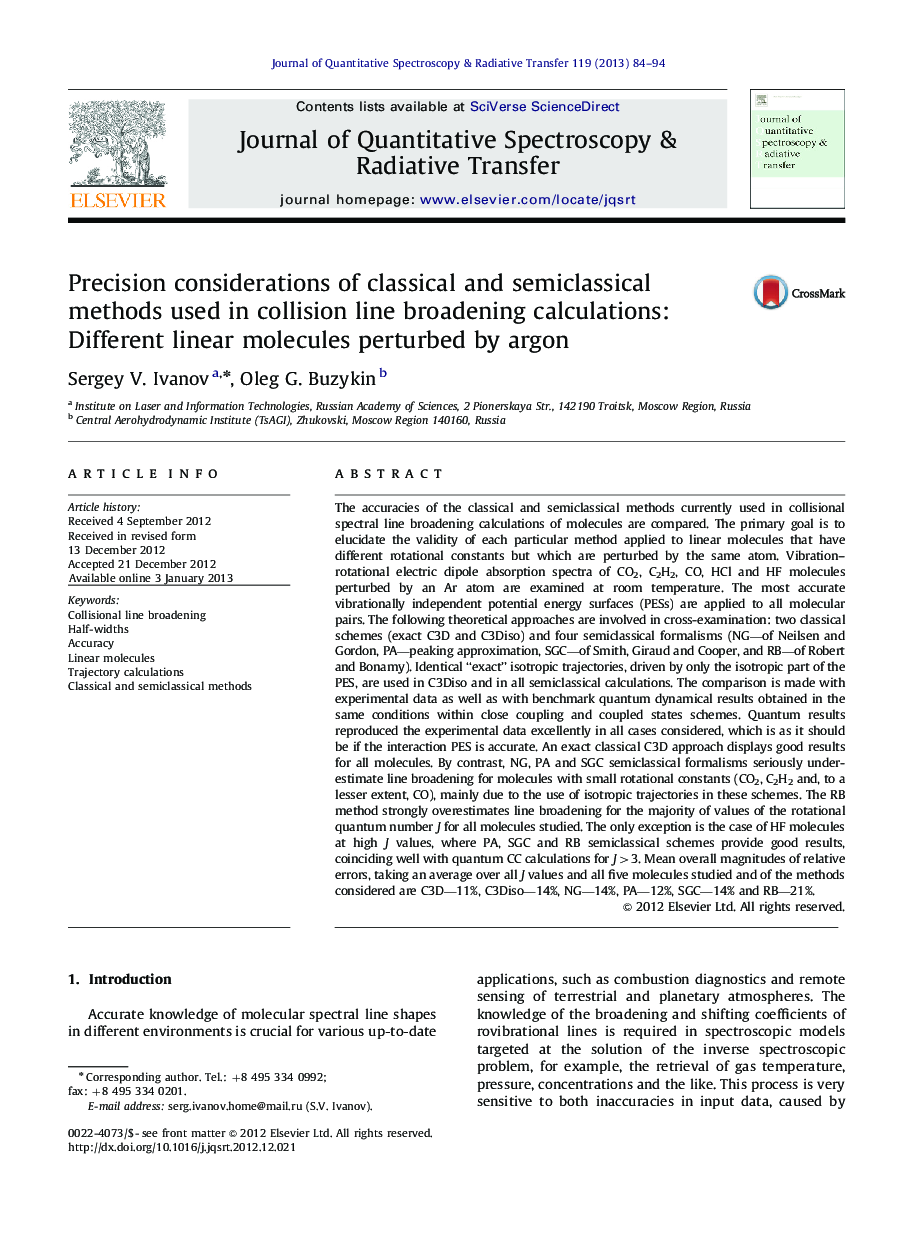| کد مقاله | کد نشریه | سال انتشار | مقاله انگلیسی | نسخه تمام متن |
|---|---|---|---|---|
| 5428933 | 1508696 | 2013 | 11 صفحه PDF | دانلود رایگان |
The accuracies of the classical and semiclassical methods currently used in collisional spectral line broadening calculations of molecules are compared. The primary goal is to elucidate the validity of each particular method applied to linear molecules that have different rotational constants but which are perturbed by the same atom. Vibration-rotational electric dipole absorption spectra of CO2, C2H2, CO, HCl and HF molecules perturbed by an Ar atom are examined at room temperature. The most accurate vibrationally independent potential energy surfaces (PESs) are applied to all molecular pairs. The following theoretical approaches are involved in cross-examination: two classical schemes (exact C3D and C3Diso) and four semiclassical formalisms (NG-of Neilsen and Gordon, PA-peaking approximation, SGC-of Smith, Giraud and Cooper, and RB-of Robert and Bonamy). Identical “exact” isotropic trajectories, driven by only the isotropic part of the PES, are used in C3Diso and in all semiclassical calculations. The comparison is made with experimental data as well as with benchmark quantum dynamical results obtained in the same conditions within close coupling and coupled states schemes. Quantum results reproduced the experimental data excellently in all cases considered, which is as it should be if the interaction PES is accurate. An exact classical C3D approach displays good results for all molecules. By contrast, NG, PA and SGC semiclassical formalisms seriously underestimate line broadening for molecules with small rotational constants (CO2, C2H2 and, to a lesser extent, CO), mainly due to the use of isotropic trajectories in these schemes. The RB method strongly overestimates line broadening for the majority of values of the rotational quantum number J for all molecules studied. The only exception is the case of HF molecules at high J values, where PA, SGC and RB semiclassical schemes provide good results, coinciding well with quantum CC calculations for J>3. Mean overall magnitudes of relative errors, taking an average over all J values and all five molecules studied and of the methods considered are C3D-11%, C3Diso-14%, NG-14%, PA-12%, SGC-14% and RB-21%.
⺠Ar-broadening coefficients for CO2, C2H2, CO, HCl, HF. ⺠Electric dipole absorption lines. ⺠Quantitative evaluation of precision for various theoretical methods. ⺠Adequacy of quantum and classical methods used with an accurate PES. ⺠Failure of semiclassical methods used with an accurate PES.
Journal: Journal of Quantitative Spectroscopy and Radiative Transfer - Volume 119, April 2013, Pages 84-94
